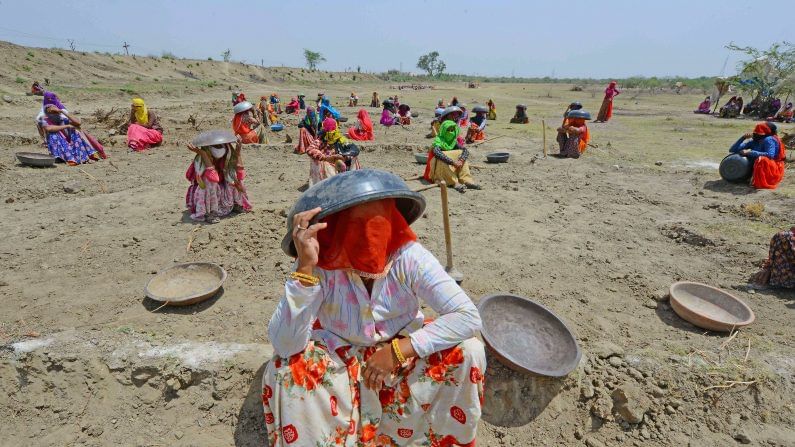COVID-19 impact: MGNREGA helps rein in rural unemployment from zooming
Demand for jobs under the scheme rose 12% in February over January

Amid speculation of a second wave of COVID-19 wave in the country, there has been a sharp rise in the demand for work under MGNREGA, the rural employment guarantee scheme.
The number of persons looking for jobs rose from 34.2 million in January to 38.3 million in February — a rise of almost 12%. The February figure is a whopping 32.5% higher than the demand of 28.9 million in November 2020 which was a festive season.
“I think every year there is a spike in the demand of jobs around February this year since the harvesting season ends. However, due to the additional allocation in 2020, you can perhaps see additional employment this year. In other years, there is hardly sufficient money to pay,” said Abhiroop Mukhopadhyay, professor of economics at ISI Delhi.
While highlighting the significance of the welfare scheme, economists pointed out that the scheme helped check a steep rise in rural unemployment this year.
Renita D’Souza, research fellow at Observer Research Foundation, a Delhi-based think tank, pointed out that the rural employment figure for January 2021 was 5.83% that rose to 6.86% in February. “In other words, it means that if the allocation for MGNREGA was not raised last year, the unemployment figure would have been even higher,” she said.
On May 17 last year, the Centre said that they were allocating an additional Rs 40,000 crore in the light of the pandemic.
Though the government allocated a total of Rs 1.11 lakh crore for MGNREGA in 2020-21 to tackle the demand for jobs, especially in rural India following the loss of jobs due to the lockdown, the allocation for 2021-22 was Rs 73,000 crore.
An MGNREGA tracker released in December 2020 by People Action for Employment Guarantee revealed 252 crore person days were till November. The figure represented a rise of 43% compared to the previous year.
D’Souza also said the scheme probably needs more allocation than the Rs 73,000 crore that has been earmarked for 2021-22.
“The importance of the scheme can’t be overestimated. It needs to be strengthened and spread even further,” said Abhirup Sarkar, who teaches economics at ISI Kolkata.
Increased allocation might be needed keeping in mind the rising number of COVID cases and selective lockdowns in different states, said experts.
Sarkar also pointed out that the sharp rise in work under the scheme gives rise to doubts whether the economic recovery is taking place at all.
“It’s a tell-tale figure. It puts into doubt whether the economy would be able to attain the 11% growth projected in 2021-22,” added Sarkar. He pointed out that the job demands for October and November last year were lower because it was harvesting time.
Echoing Sarkar, D’Souza said that the figures indicate that jobs are not rising fast enough beyond MGNREGA.
“It is a good sign that the scheme is providing employment to the people of rural India especially at a time when there was a sharp contraction in the labour market due to the pandemic. This project was always relevant for employment generation at the base of the pyramid. If there is a contraction in the economy, its significance is bound to increase,” said Dipankar Dasgupta, former professor of economics at ISI Delhi.
Though they highlighted the significance of MGNREGA, economists held out a caution against overdependence on the project to keep unemployment rates down.
The economist from ISI Kolkata aid there is a running debate among economists on the effectiveness of direct transfer tools such as the MGNREGA scheme and infrastructure projects on addressing the need for employment generation.
“While the need for infrastructure projects cannot be overstated, overdependence of spending on these projects for creation of jobs is faulty since it can work only in the long term. The need for employment generation is immediate and there has to be a balance,” added Sarkar.
D’Souza also felt that despite its high relevance to generate employment, income from it – Rs 202 per head per day – does not generate upward social mobility at all.
“The government should not depend just on this scheme, or projects like this one, to generate employment. There should be other avenues such as financing infrastructure that generate employment for the long term and create economic assets,” she said.